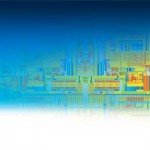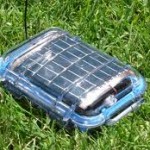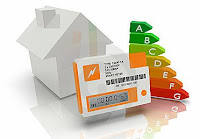The Internet of Things holds great potential, and much has been written about the final applications and the possibilities – however one major factor of any device is how it will be powered. It’s all very well to have the latest sensors or interactive devices, if they don’t have a suitable power supply. It’s easy to consider a battery – however there’s many more options that can increase lifespan, reduce maintenance calls and therefore the running costs. Let’s review a few options that can provide a portable power supply for your IoT nodes where mains power or cabled-in power supplies are not available.
First, consider solar photovoltaic – a common choice for sensing, control or measurement devices that are located outdoors where sunlight is available, and that consume a relatively small amount of power. For a small, low-power embedded device that receives a reasonable amount of sun each day, a moderately small solar panel is perfectly capable of supplying sufficient power – on average – to run a small, basic wireless network node consisting of a microcontroller, some sensors and an embedded low-power Wi-Fi, Bluetooth or 802.15.4/ZigBee radio transceiver. However this is assuming that the overall system is designed for a reasonable degree of power efficiency.
However, solar power is intrinsically intermittent and is only available on average for a fraction of the day. To allow the system to have access to the current it needs to function when needed, solar-powered wireless devices almost always need to incorporate a small amount of energy storage in the form of a battery or supercapacitor in conjunction with the solar cell. Furthermore, solar cells or solar panels typically have a relatively low output voltage if a small number of cells are used, and their non-linear V-I curve makes it desirable to employ Maximum Power Point Tracking (MPPT) where practical.
This is necessary to keep the system operating near the maximum power point so that the limited energy available is harvested most efficiently. A solar power supply for a remote wireless system ideally tracks the maximum power point of the cell along the V-I curve and is able to charge a small battery or supercapacitor to fill in the demand when sufficient sunlight is not available.
As an example of a controller IC one may use for the power supply in a small solar powered system, the Linear Technology LTC3105 is a high efficiency step-up DC/DC converter that can operate from input voltages as low as 225 millivolts, with a built-in maximum power point controller (MPPC). As well as solar cells, this device is well suited to other low voltage, high impedance energy harvesting transducers such as thermoelectric generators and fuel cells.
Whilst it is not a true maximum power point tracker, the user-programmable maximum power point setting helps to optimise the efficiency of energy extraction from any energy source, such as a thermoelectric pile or a solar cell, where the voltage across the transducer may vary with changing environmental conditions as well as with the load current. The LTC3105 is capable of supplying 70 mA of output current at 3.3V from an input voltage of 1 volt – this is sufficient power to run a small, well designed basic sensor node consisting of a microcontroller, RF transceiver and a sensor or two.
Another type of power supply is known as energy harvesting, made possible by parts such as the Linear LTC3108, which is designed to accommodate energy harvesting from transducers with extremely low output voltages, as low as 20 millivolts. This makes it particularly well suited for use with thermopiles and thermoelectric generators which can generate a very low potential difference from a realistic temperature difference – a potentially convenient energy source for remote sensing in industrial automation or process monitoring in high-temperature systems where wired communications and power are not convenient.
Energy can also be derived from vibration, and using a part such as the Linear LTC3588 – a piezoelectric energy harvesting power supply controller which connects to a piezoelectric crystal to harvest mechanical energy in the form of vibrations from the ambient environment. This IC incorporates a low-loss, full-wave bridge rectifier and is capable of accommodating the rapidly changing AC voltage output and high source impedance of a piezoelectric crystal subject to mechanical stress and converting this energy into a DC current with relatively high efficiency.
Output voltage selections between 1.8V and 3.6V are available with a continuous output current capability of up to 100 milliamps, compatible with a range of modern power-efficient microcontrollers and RF mesh systems-on-chip.
An electromechanical energy harvester of this sort can be employed to provide a continuous source of a small amount of “free” energy for a small, efficient wireless network mote, particularly in applications such as vehicles and industrial machinery where plenty of vibrational energy is available to be harvested in the environment.
Finally, for some systems it is also practical to use just batteries – for example, lithium-ion, lithium-polymer or nickel-metal hydride batteries – and rely on user intervention to simply
recharge and replace the batteries where needed. The batteries may be left internally, inside the device, with the system being plugged into a power supply via a charging port
– perhaps using a low-power standard power-supplying interface such as USB – when the device requires a recharge, as opposed to the traditional method of removing and swapping the batteries.
In this sort of application, battery management and charging ICs such as the Microchip MCP73833 Li-polymer / Li-ion charge management controller can be of use to control the recharge of a Li-ion cell, as can buck/boost converters such as the Texas Instruments TPS63031. A buck/boost converter like this allows a regulated output voltage to be generated from input voltages both higher and lower than the desired output voltage – an output of 500mA at 3.3V, in this case, from an input voltage anywhere from 2.4 to 5.5 volts. This allows a battery such as a two-cell NiMH, three-cell NiMH, or single-cell Li-ion / Li-polymer to be used efficiently and charged and discharged across the entire usable part of its discharge curve without hitting the minimum input voltage of a LDO or buck regulator.
No matter what your device or where it will be located, finding an appropriate source of power is possible, and easier than you realise. It just takes a little research and a team of dedicated engineers with the experience and knowledge to understand your requirements. Here at the LX Group we have the experience and team to make things happen. With our experience with connected devices, embedded and wireless hardware/software design, and ability to transfer ideas from the whiteboard to the white box – we can partner with you for your success.
We can create or tailor just about anything from a wireless temperature sensor to a complete Internet-enabled system for you – within your required time-frame and your budget. For more information or a confidential discussion about your ideas and how we can help bring them to life – click here to contact us, or telephone 1800 810 124.
LX is an award-winning electronics design company based in Sydney, Australia. LX services include full turnkey design, electronics, hardware, software and firmware design. LX specialises in embedded systems and wireless technologies design. https://lx-group.com.au
Published by LX Pty Ltd for itself and the LX Group of companies, including LX Design House, LX Solutions and LX Consulting, LX Innovations.





